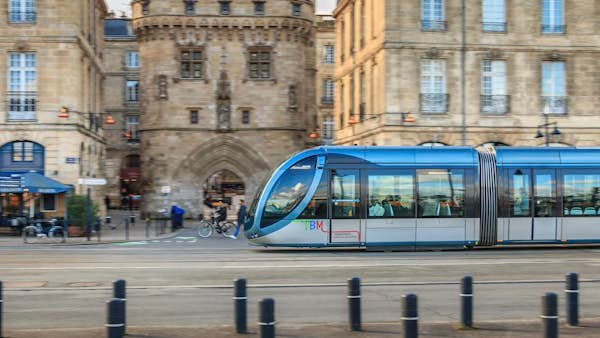The ‘new’ paper guidebook | Strategies helping Go City win the attractions race
The ‘new’ paper guidebook | Strategies helping Go City win the attractions race
Remember when paper guidebooks used to be a traveller’s way of getting around? One could argue that while the guidebook is antiquated at this point, the concept of a travel guide has never been more in demand. Smartphones may have replaced physical guides, but the need of the traveller remains the same – to be able to see a new destination easily, effectively and as seamlessly as possible.
Judy Gauthier, Chief Commercial Officer of Go City, stopped by the WiT Studio (housed in the PhocusWire Studio for this session) to reflect on two decades in the industry and how digital transformation has reshaped the way travellers explore destinations.
Watch full interview:
Gauthier recalls a defining moment in 2006 when she realised Go City had made its mark. “I was walking through downtown Boston on the Freedom Trail, and every other person had a Go Boston guidebook in their hand,” she says. Fast forward to today, and instead of printed maps, travellers are navigating cities with their phones – and their Go City passes.
“It’s the same concept,” Gauthier explains. “Now, when I stand outside the 9/11 Museum in New York and casually glance at what people have on their screens, I see Go City passes on their phones.” The shift to digital not only changed how people access attractions but also how attractions manage visitor flow, pricing, and customer engagement.
One of the pandemic’s lasting effects on travel has been the shift from open-access ticketing to time-bound bookings. While this ensures a smoother experience, it can take away some of the spontaneity that many travellers cherish.
“You really want to honor the fact that there are two kinds of customers,” says Gauthier. “There are the planners who want everything set in advance, and then there are those who prefer to explore freely. The key is creating a hybrid experience, and that’s what we’ve done with our passes.”
Go City’s global expansion has led to a restructuring, with its Asia Pacific operations now integrated into the broader business. “It wasn’t a test anymore. We had finally realised we could succeed out there, so now we’ve rolled it properly into our structure,” Gauthier shares.
While standardisation helps streamline operations, local expertise remains key. “A North American market is completely different from a European one, and both are different from an Asian market. That’s why we rely on local experts who work closely with resellers and partners in their regions.”
With OTAs aggressively expanding into tours and activities, Go City remains confident in its unique model. “Unlike OTAs that pull in broad inventory, we curate experiences. Instead of 1,000 activities in a city, we might have 50 to 100, but each one is handpicked and tested by our experts,” Gauthier says.
Beyond curated choices, Go City simplifies trip planning. “Our new itinerary planner within the app allows users to select attractions of interest, input their starting location, and instantly receive the most efficient way to experience their choices. It’s about making sense of a complicated destination and removing the guesswork for travellers.”
Looking ahead, Go City sees opportunities beyond attraction access. “We can drive more revenue to our attraction partners,” Gauthier notes. “Whether it’s selling VIP experiences, filling unsold inventory, or promoting food and beverage options, we know where our customers are and can market effectively to enhance their experience.”
While many in the industry chase the elusive “connected trip” – seamlessly linking flights, hotels, and activities – Gauthier remains skeptical of how well it’s been executed. “It’s become a buzzword, but I haven’t seen anyone truly nail it. What we do well is make the in-destination experience seamless, which is where travelers need the most help.”






